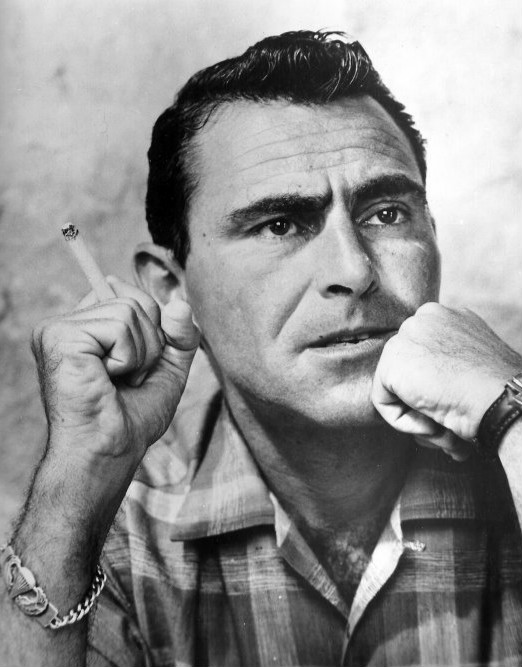
In his popular series “The Twilight Zone,” Rod Serling[1] set the television table for us to feast upon the unknown. He saw to it that we dined in a state of fear, or anxiety or at the very least in a state of intense curiosity. He kept us awake on Friday nights with tales of aliens, demons, time warps, criminals and despots. But what Mr. Serling so often served to us was a heaping plateful of human weakness. Such was the case in season five, episode 26, a show called, “I Am the Night—Color Me Black.”[2]
We are in a small American town. It could be anywhere in any state—when, on the morning of a hanging, the sun fails to break at dawn. Darkness prevails.
As the execution hour approaches, the whole town grows edgy at the sun’s utter absence. On the radio, in the background, we hear the eerie news of the missing sunrise. The news is spreading throughout the region and across the country—the sun did not rise on one small town this day.
The convicted killer avows his own guilt. Yet he begs no pardon. He is angry though. He is resentful. For his victim, you see, was a man who had committed cruel and vile acts.
The newspaper reporter at the jail voices concerns over “a few disturbing facets about this case.” To the Sherriff and his Deputy, the reporter explains, “One, the murdered man was not a decent man. He was a cross-burning psychopathic bully who attacked that man in there. And, two, Deputy Pierce, here, saw it happen, and then perjured himself.”
The evidence that the killing occurred from an act of self-defense was not presented during the trial. The evidence was buried in a community that harbored shared feelings—feelings about when bullying is “okay,” feelings about when it is acceptable to ignite a cross, feelings that justify them by virtue only from the false power of majority.
The clock tower tolls the hour. Behind the readied noose, we see the tower silhouetted by the rope. The citizens are congregated in the darkness. Deputy Pierce observes, “Looks pretty good. That ought to tend to him.” The Sherriff solemnly observes, “But who’s going to tend to us? Who or what is going to tend to us?”
The hanging is completed, but there is an aftermath. As the final scene is frozen, the last somber lines of the script emanate from a radio. In level tones, the announcer informs the world that the shroud is spreading around the globe.
“The darkness continues to make itself known,” the announcer says.
Then Rod Serling concludes our journey into the unlit lives of one small town.
“A sickness known as Hate—not a virus, not a microbe, not a germ—but a sickness nonetheless. Highly contagious, deadly in its effects. Don’t look for it in the Twilight Zone. Look for it in a mirror. Look for it before the light goes out altogether.”
This invitation is presumed to be personal since Rod Serling wrote this episode himself.
Image: Photo of Rod Serling (1924-1975)
[1] Photo of Rod Serling (1924-1975) found in Public Domain at: https://commons.wikimedia.org/wiki/File:Rod_Serling_photo_portrait_1959.JPG
[2] Originally aired March 27, 1964—see: http://www.imdb.com/title/tt0734577/